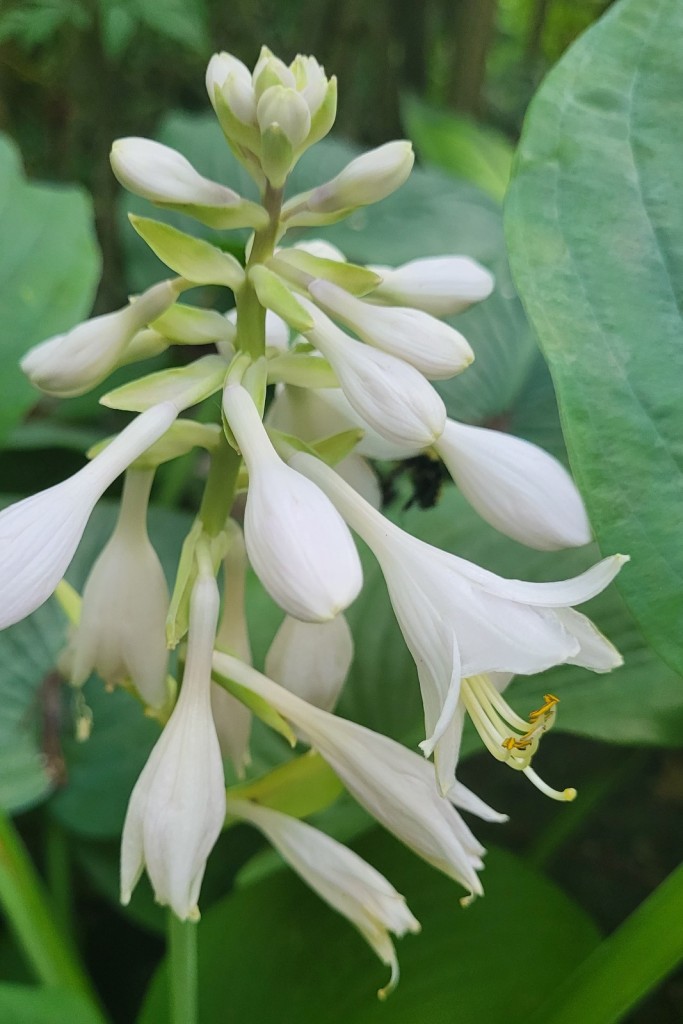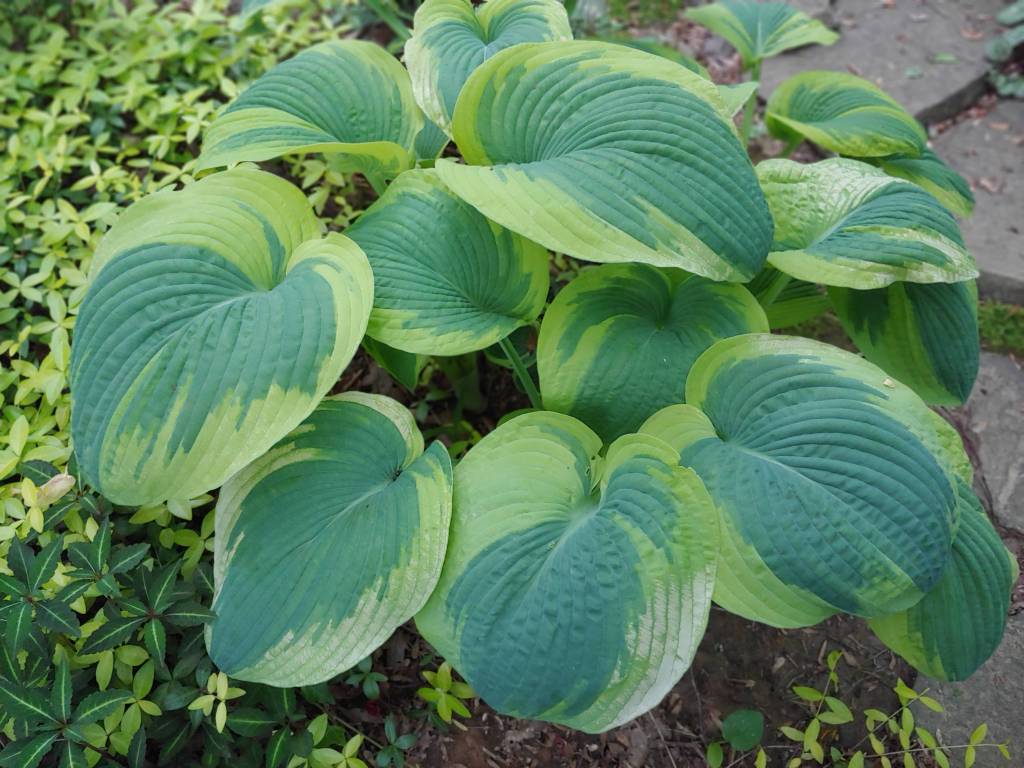I suspect the possibility there are too many hostas in the garden. Curiously, my wife does not hesitate to question the numbers of dogwoods, redbuds, and Japanese maples, but I am rarely scolded over quantities of smaller plants. She does not think twice before chopping leaves that veer over the stone paths, but she does so with hardly a mention. Her concern, I think, is the budget expended on more costly plants, though she has toned down in recent years as her travel budget has increased.

Visitors make no mention, other than to remark that there are many hostas, and how do you keep the deer out? I don’t know the number and don’t care, but there was a time years ago when there might have been more. But then, deer went to work and the number diminished until I began regularly spraying a repellent. (Currently, I spray Bobbex, but I’ve sprayed others with similar success. In alternate months I add a dose of pepper sauce to give it a different scent.)This does the trick as long as I remember to spray every four to five weeks. If I stray longer, I’m soon reminded.

I find that hostas are excellent fillers for any open space in the shaded garden. If I’ve guessed wrong and a fern or hellebore doesn’t flourish, the go to is a barrenwort (Epimedium) in dry shade where roots are a problem, or a hosta in more typical soil or with a bit more sunlight. While foliage of barrenworts doesn’t vary as much, there are considerable differences in the size, color, and textures that make hostas very adaptable.

But, are there too many? At least to my eye, no. My focus is as much foliage texture as color, and I’m satisfied with the ground covering jumble that the shaded garden has become. I adore large, blue-green leafed hostas, many of which are seedlings of an original ‘Elegans’ (Hosta sieboldiana ‘Elegans’, above) that deer have never bothered. But recently, I’ve planted partially shaded crevices between boulders bordering the circle patio with a variety of dwarf hostas with long, narrow leaves (below).


Weeds are not a big problem in the shade, but even maple seedlings find it difficult to grow under the foliage of hostas, both large and small leafed. In my quest to cover every inch of the garden, I’ve planted shrubs beneath trees and even one Japanese maple under another, but there’s only one hosta under another hosta. One of my favorites, ‘Regal Splendor’ (below) grows very upright with large leaves, with a smaller, yellow leafed hosta that once grew beside it now partially hidden beneath as ‘Regal’ has grow to its full potential in slight dampness beside one of the ponds.


As you would expect, I’ve long ago forgotten the names of many of the garden’s hostas. Some, I probably knew for a few hours. I should pay more attention, or keep better records, I guess.


Your hostas are gorgeous! I love them too. I have several Blue Mouse Ears that have spread, combined with Japanese painted ferns. A patch of Curly Fries is getting established, and this spring I planted a patch of mixed hostas next to the dry creek and rain garden we put in a year or two ago. They cam eback well this spring even after the sudden, harsh December freeze we had down here. I have a border of August Moon in front of our pink azaleas in front of the house; they have spread nicely to fill in and make a cohesive edging. The hosts that most recently caught my eye is a giant blue one called Wind Beneath My Wings. I don’t own it yet, but I probably will!
Just before I sprayed the repellent last week, I noticed deer damage on my indicator plant, a plain green seedling that is always the first eaten. Deer rarely bother large leafed varieties, most of which I don’t spray. I’m certain there’s no better plant for shade.